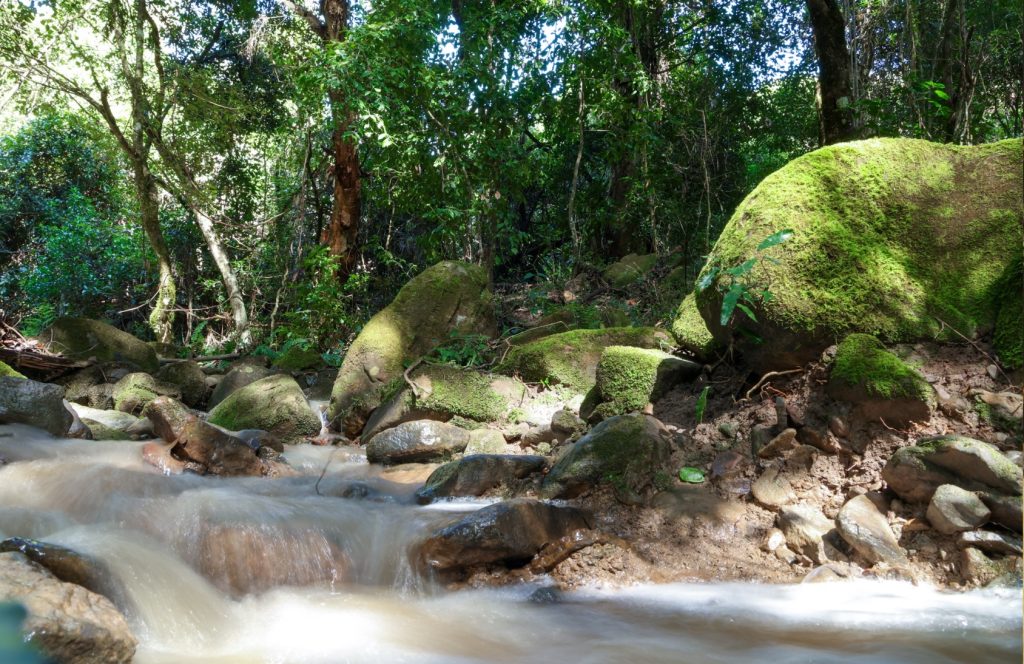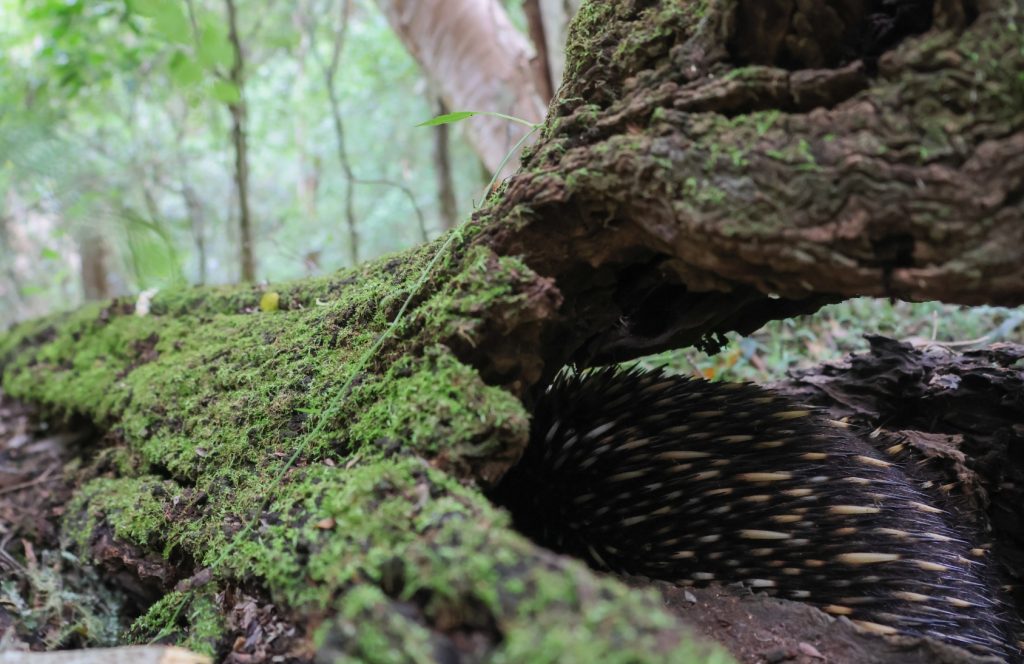Discover the vital work of our Bushland Management Services (BMS) teams in preserving an area of rare rainforest in Western Sydney.
The National Trust’s BMS West team have embarked on an exciting new three-year partnership with Local Land Services. The site is located along the ridgetops of Razorback within the Wollondilly Shire with works focusing on the enhancement and protection of the remnant Western Sydney Dry Rainforest, a critically endangered ecological community.
Situated at the bottom of a steep gully, the site is only accessible by foot, with the rugged terrain requiring all equipment and materials to be transported by backpack. Despite logistical challenges, the project promises to be immensely rewarding, yielding valuable ecological insights and even the potential for new sightings of rare and endangered flora.

Former project supervisor for BMS West, and current BMS Regional Manager, Jack Holdsworth says that work on the Razorback project has already proved a beneficial learning experience for the team.
‘How many people can say they have to hike two kilometres to get to work in the morning! Working in a different environment and vegetation community than what we are used to forces us to think outside the box and do things differently. We have had to apply our skills to new scenarios and develop new management methods, as well as learn the names and ecology of countless new species. The more diverse the ecologies we work in, the better our skills become,’ he says.
The first stage of the project has concentrated on the removal and control of invasive Lantana and African olive plants to make way for the spread of native vines. African olives were poisoned in-situ to allow native vines to be able to climb the remaining dead structure and further propagate.
Establishment of native vines plays a critical role by limiting light exposure, which allows sensitive understorey species such as native orchids and rare ferns to germinate. The re-establishment of these understorey species utilises the site’s natural resilience, improving the overall biodiversity and structural complexity of Razorback.
All work has been carried out with great care to ensure that the habitats of the diverse flora and fauna of the site are not disturbed. However, spotting the local inhabitants has been a highlight for the BMS teams. ‘We have had numerous encounters with some amazing wildlife, including echidnas, wombats, and swamp wallabies. We have also come across some of the biggest gum trees we have ever seen, having survived land clearing due to how steep and remote the valley is,” says Jack.

Early results have shown clear improvement in the restoration of native plants. As temperatures increase and new growth emerges, the BMS teams will continue to monitor and manage exotic annuals, vines, and grasses at Razorback, ensuring the preservation of the rich biodiversity of this remarkable site.

 Facebook
Facebook Linkedin
Linkedin Email
Email